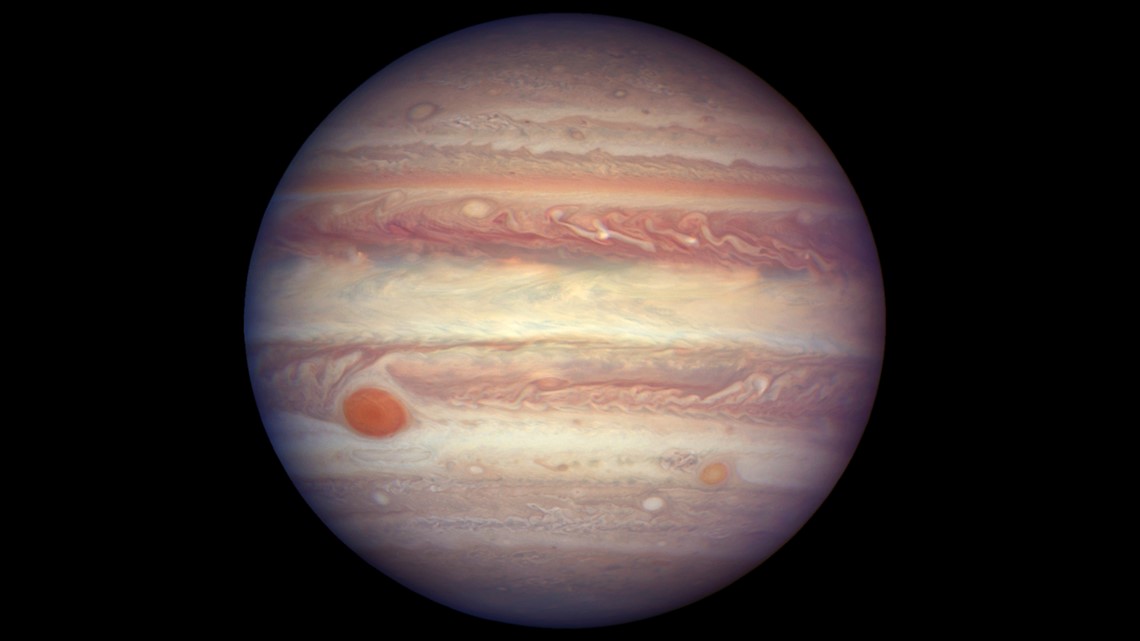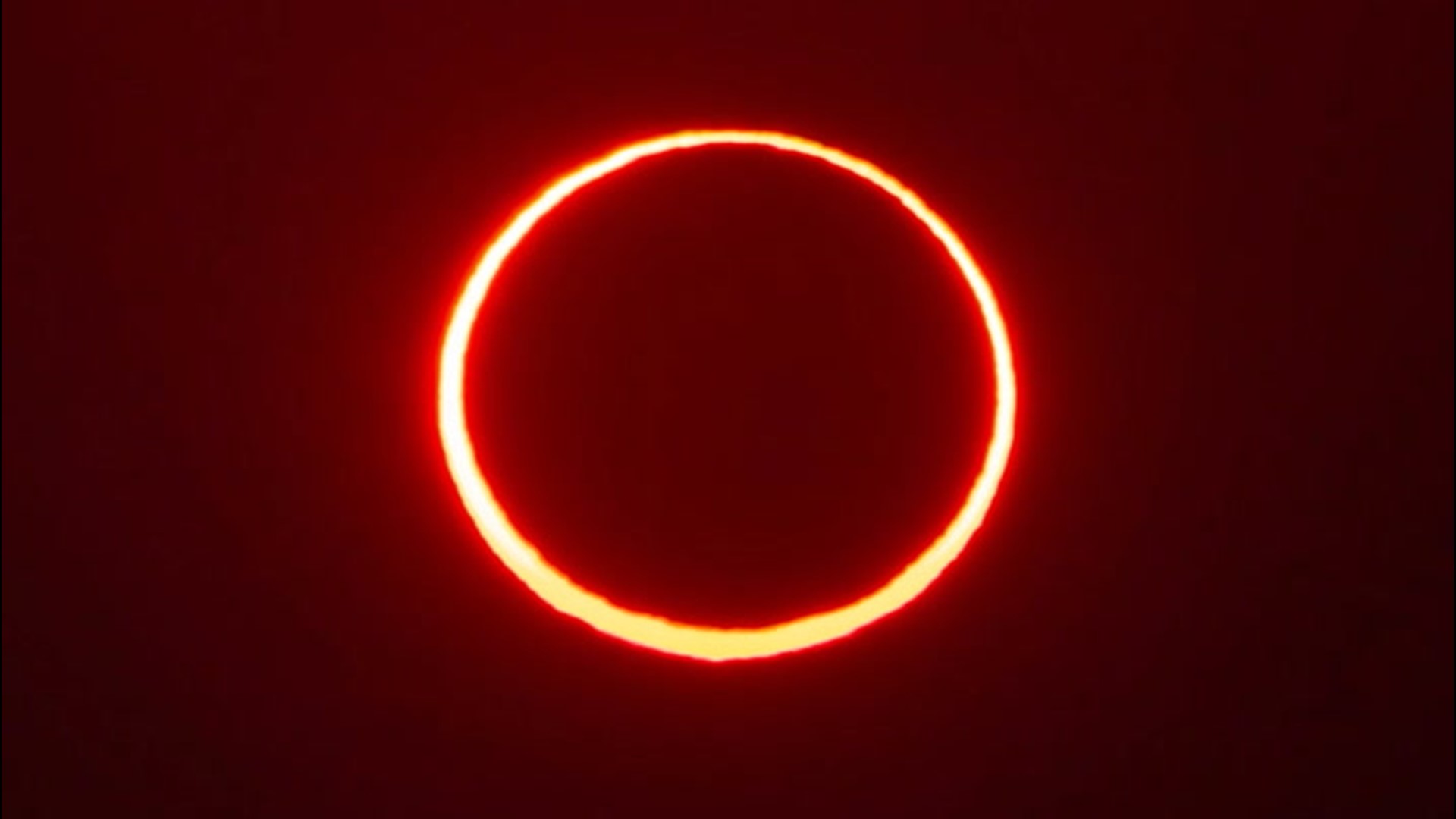The past year has featured some unique astronomical happenings that awed stargazers around the globe, including the surprise appearance of Comet NEOWISE, and as the calendar flips to 2021, there is a diverse slate of events to look for in the night sky.
Some people will lose sleep to see one of the biggest events of the year -- the first total lunar eclipse visible from the United States in more than two years. This will be followed up by another celestial alignment just two weeks later.
Many of these events can be seen without any special equipment like a telescope, although a bit of planning and luck from Mother Nature will be required.
Here are the top 10 astronomy events to mark on your calendar for 2021:
The closest planet to the sun is also the most elusive for stargazers to see, but before daybreak on March 5, it will be slightly easier to find, as long as there is a clear view of the eastern horizon.
About 45 minutes before sunrise, Jupiter and Mercury will appear extremely close, an astronomical phenomenon called a conjunction. Mercury is often dim and difficult to spot due to its small size and proximity to the sun, but with Jupiter so close, it will not be as difficult to find. Mercury will be positioned just to the left of the solar system's largest planet.
If clouds obscure the event that morning, the duo will be visible in the days immediately following the celestial meet-up, but they will not appear quite as close as they do on March 5.


After a nearly four-month-long drought of meteor showers, shooting stars will finally return to the sky in great numbers in late April.
The Lyrid meteor shower peaks on the night of April 21 into early April 22, featuring around 15 to 20 meteors per hour. This is the first moderate meteor shower since the Quadrantids in early January.
If cloudy conditions prevail for peak night, stargazers will have to wait only about two more weeks for the next meteor shower, the eta Aquarids, which falls on the night of May 4 into the early hours of May 5.
Several times a year, the full moon appears slightly bigger and brighter than normal, a phenomenon that has gained popularity in recent years due to its nickname: a supermoon.
Three supermoons are slated to rise in 2021 with the first shining during the final week of April; however, the difference in size between a supermoon and a ‘normal' full moon is almost imperceptible to the unaided eye. Supermoons will also glow in May and June.
April's full moon is also known as the Pink Moon as it is the time of year when spring wildflowers bloom, particularly the ground phlox, according to The Old Farmer's Almanac. Other nicknames include the Breaking Ice Moon, the Frog Moon and the Sugar Maker Moon.
Arguably the best astronomical event of all of 2021 will take place near the end of May when the sun, Earth and moon align perfectly to create a total lunar eclipse. This will be the first total lunar eclipse visible for most of the U.S. since Jan. 21, 2019.
Total lunar eclipses are sometimes called "blood moons" as the moon turns red during the middle of the eclipse. This change in color is actually caused by the atmosphere of the Earth.
Part of the eclipse will be visible for most of North America; however, the total eclipse itself will only be visible from the High Plains, the Rocky Mountains and the Pacific Coast. The eclipse will also be visible for parts of South America, Asia and eastern Asia.


Just two weeks after the lunar eclipse, the sun, moon and Earth will align once again, but this time to create a solar eclipse that will be visible for part of North America.
As the sun breaks above the horizon on June 10, part of it will be covered up by the moon. For the northeastern U.S. and eastern Canada, this will be a brief partial solar eclipse, but for a small region of northern Ontario and far northern Quebec, a ‘ring of fire' solar eclipse will be visible.
Proper eyewear is a necessity for this event. Looking at the sun without a specially-made solar filter can lead to permanent eye damage.
Those in northern Europe, including Spain, France, Germany, the United Kingdom and Scandinavia, will also be able to see a partial solar eclipse.
The most popular meteor shower of the entire year will peak on a warm summer night during the second week of August, treating onlookers with as many as 100 meteors per hour.
If there is one meteor shower to plan to watch this year, it is the Perseids, especially since this year the moon will be below the horizon most of the night. With no moon in the sky, there will not be as much light pollution, making it easier to see some of the dimmer meteors.
The best time to look for shooting stars will be after midnight, but some will be visible as early as nightfall. "You will be more likely to see a long-lived, bright meteor fly across a large portion of the sky during the evening," AccuWeather astronomy blogger Dave Samuhel said.
The upcoming summer will be perfect for people to learn how to use a telescope as Jupiter and Saturn will be prominent features all season long. The two are easy and interesting objects to observe through the eyepiece of a telescope, no matter how big or small it is.
In August, both planets will reach opposition, or around the time of year when they are closest to the Earth, and on Aug. 22, a blue moon will shine in line with Jupiter and Saturn. The trio will appear in the southeastern sky after sunset.
Blue moons are commonly known as the second full moon in a calendar month, but there is a second definition. Typically, an astronomical season has three full moons, but every few years, four full moons fall in one season. The third of the four full moons is called a blue moon.
The third week of November will end with an impressive partial lunar eclipse that will be visible across all of North America.
For residents of the eastern half of Canada and the U.S., this may be more impressive than the lunar eclipse that unfolds in May.
November's lunar eclipse will be very close to a total lunar eclipse with just a sliver of the moon missing Earth's dark inner shadow. Because of this, it may be possible for the moon to briefly appear rusty orange or red, similar to what occurs during the height of a total eclipse.
The partial lunar eclipse will also be visible across South America, Australia and eastern Asia.
It is still foggy on what Thanksgiving will look like across the U.S. in 2021, but folks stepping outside that evening will be able to feast their eyes on three bright planets in the southern sky.
Venus, Saturn and Jupiter will be lined up just after sunset on Nov. 25 with all three outshining every star in that area of the sky.
This is not just a single-night event, so if cloudy conditions end up on the menu that evening or if late-day Thanksgiving dinners are planned for around the same time, prospective skywatchers can look for the three planets each evening into the start of December.
The list of the top astronomy events of 2021 is capped off by one of the most reliable meteor showers year in and year out, although the weather can be fickle for viewing it across the northern tier of the U.S. due to the time of year in which it takes place.
As many as 120 meteors per hour may be counted on the night of Dec. 13 into the early morning of Dec. 14 as the Geminids put on a dazzling display in the sky. In addition to being the most active meteor shower of the year, some of the shooting stars glow in vibrant colors.
The Geminids is one of the only major meteor showers that are active during the evening, but the best time to view this year's rendition of the meteor shower will be during the second half of the night after the moon has set.
Keep checking back on AccuWeather.com and stay tuned to the AccuWeather Network on DirecTV, Frontier and Verizon Fios.

